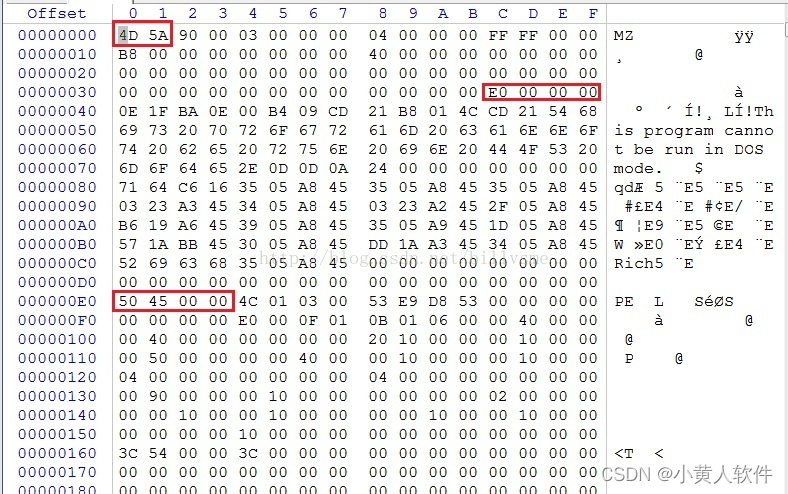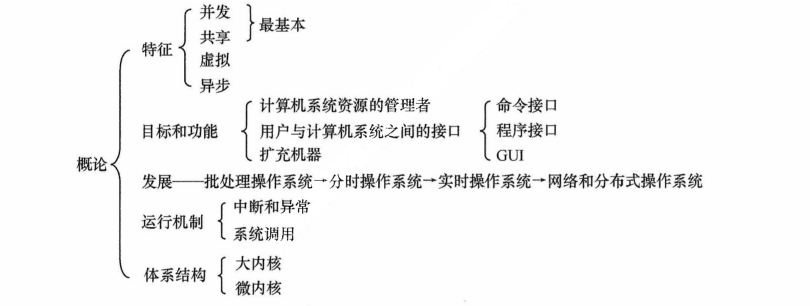| 属性 | 子属性 | 类型 | 说明 |
|---|---|---|---|
| manufacturer | String | 制造商 | |
| model | String | 型号 | |
| serialNumber | String | 序列号 | |
| Firware | 固件信息 | ||
| name | String | 固件名称 | |
| version | String | 固件版本 | |
| describe | String | 固件描述 | |
| manufacturer | String | 制造商 | |
| releaseDate | String | 发行日期 | |
| Baseboard | 主板信息 | ||
| version | String | 主板版本 | |
| model | String | 模型 | |
| serialNumber | String | 序列号 | |
| manufacturer | String | 制造商 |
四、使用场景
4.1 获取 CPU 信息
想要获取 CPU 信息,就需要CentralProcessor 类(中央处理器)作为参数,oshi库获取CentralProcessor 类步骤为:
-
然后根据此类的内置方法获取硬件抽象层类 HardwareAbstractionLayer 类,主要用于将硬件抽象化,允许计算机操作系统在逻辑层而不是硬件层与硬件设备交互。
-
最后根据HardwareAbstractionLayer类内置方法获取CentralProcessor 类,提供setCpuInfo方法参数
public static Map<String, Object> getCpuInfo() throws InterruptedException {
HardwareAbstractionLayer hardware = new SystemInfo().getHardware();
Map<String, Object> cpuInfo = Maps.newHashMap();
CentralProcessor processor = hardware.getProcessor();
// 第一次获取:获取系统范围的 CPU 负载滴答计数器:
long[] prevTicks = processor.getSystemCpuLoadTicks();
//等待一段时间
java.lang.Thread.sleep(1000);
//第二次获取:获取系统范围的 CPU 负载滴答计数器:
long[] ticks = processor.getSystemCpuLoadTicks();
long user = ticks[CentralProcessor.TickType.USER.getIndex()] - prevTicks[CentralProcessor.TickType.USER.getIndex()];
long nice = ticks[CentralProcessor.TickType.NICE.getIndex()] - prevTicks[CentralProcessor.TickType.NICE.getIndex()];
long cSys = ticks[CentralProcessor.TickType.SYSTEM.getIndex()] - prevTicks[CentralProcessor.TickType.SYSTEM.getIndex()];
long idle = ticks[CentralProcessor.TickType.IDLE.getIndex()] - prevTicks[CentralProcessor.TickType.IDLE.getIndex()];
long ioWait = ticks[CentralProcessor.TickType.IOWAIT.getIndex()] - prevTicks[CentralProcessor.TickType.IOWAIT.getIndex()];
long irq = ticks[CentralProcessor.TickType.IRQ.getIndex()] - prevTicks[CentralProcessor.TickType.IRQ.getIndex()];
long softIrq = ticks[CentralProcessor.TickType.SOFTIRQ.getIndex()] - prevTicks[CentralProcessor.TickType.SOFTIRQ.getIndex()];
long steal = ticks[CentralProcessor.TickType.STEAL.getIndex()] - prevTicks[CentralProcessor.TickType.STEAL.getIndex()];
long totalCpu = user + nice + cSys + idle + ioWait + irq + softIrq + steal;
// cpu供应商
cpuInfo.put("cpuVendor", processor.getProcessorIdentifier().getVendor());
// cpu名称
cpuInfo.put("cpuName", processor.getProcessorIdentifier().getName());
// CPU核心数
cpuInfo.put("cpuNum", processor.getLogicalProcessorCount());
// CPU总的使用率
cpuInfo.put("totalPercent", totalCpu);
// CPU用户使用率,表示用户模式下花费的CPU时间
cpuInfo.put("usedPercent", new DecimalFormat("#.##%").format(user * 1.0 / totalCpu));
// CPU当前等待率,表示等待I/O操作的进程所花费的CPU时间
cpuInfo.put("waitPercent", new DecimalFormat("#.##%").format(ioWait * 1.0 / totalCpu));
// CPU系统使用率,表示系统进程所花费的CPU时间
cpuInfo.put("sysPercent", new DecimalFormat("#.##%").format(cSys * 1.0 / totalCpu));
// CPU当前空闲率,表示空闲进程所花费的CPU时间
cpuInfo.put("idlePercent", new DecimalFormat("#.##%").format(idle * 1.0 / totalCpu));
// 表示在nice值为0~99之间的进程所花费的CPU时间
cpuInfo.put("nicePercent", new DecimalFormat("#.##%").format(nice * 1.0 / totalCpu));
// 表示处理中断的进程所花费的CPU时间
cpuInfo.put("irqPercent", new DecimalFormat("#.##%").format(irq * 1.0 / totalCpu));
// 表示处理软中断的进程所花费的CPU时间
cpuInfo.put("softIrqPercent", new DecimalFormat("#.##%").format(softIrq * 1.0 / totalCpu));
// 表示被其他线程“偷走”的CPU时间
cpuInfo.put("stealPercent", new DecimalFormat("#.##%").format(steal * 1.0 / totalCpu));
// 物理处理器数量
cpuInfo.put("physicalProcessorCount", processor.getPhysicalProcessorCount());
return cpuInfo;
}
4.2 获取内存信息
想要获取内存信息,这就需要硬件抽象层类提供的GlobalMemory类作为参数,通过GlobalMemory类的内置方法来获取内存信息。
public static Map<String, Object> getMemoryInfo() {
HardwareAbstractionLayer hardware = new SystemInfo().getHardware();
GlobalMemory globalMemory = hardware.getMemory();
Map<String, Object> gmMap = Maps.newHashMap();
// 总内存
gmMap.put("total", FormatUtil.formatBytes(globalMemory.getTotal()));
// 剩余【当前可用的物理内存量】
gmMap.put("available", FormatUtil.formatBytes(globalMemory.getAvailable()));
// 已使用
gmMap.put("used", FormatUtil.formatBytes(globalMemory.getTotal() - globalMemory.getAvailable()));
// 空闲率
gmMap.put("freeRate", 100d * (globalMemory.getAvailable()) / globalMemory.getTotal());
// 使用率
gmMap.put("usageRate", 100d * (globalMemory.getTotal() - globalMemory.getAvailable()) / globalMemory.getTotal());
gmMap.put("pageSize", globalMemory.getPageSize());
VirtualMemory virtualMemory = globalMemory.getVirtualMemory();
Map<String, Object> vmMap = Maps.newHashMap();
vmMap.put("toString", virtualMemory);
vmMap.put("swapTotal", FormatUtil.formatBytes(virtualMemory.getSwapTotal()));
vmMap.put("swapUsed", FormatUtil.formatBytes(virtualMemory.getSwapUsed()));
vmMap.put("swapUsageRate", 100d * virtualMemory.getSwapUsed() / virtualMemory.getSwapTotal());
vmMap.put("virtualMax", FormatUtil.formatBytes(virtualMemory.getVirtualMax()));
vmMap.put("virtualInUse", FormatUtil.formatBytes(virtualMemory.getVirtualInUse()));
vmMap.put("virtualUsageRate", 100d * virtualMemory.getVirtualInUse() / virtualMemory.getVirtualMax());
gmMap.put("virtualMemory", vmMap);
List<PhysicalMemory> physicalMemoryList = globalMemory.getPhysicalMemory();
List<Map<String, Object>> pmInfoList = new ArrayList<>(physicalMemoryList.size());
for (PhysicalMemory pm : physicalMemoryList) {
Map<String, Object> pmMap = Maps.newHashMap();
pmMap.put("toString", String.valueOf(pm));
pmMap.put("bankLabel", pm.getBankLabel());
pmMap.put("manufacturer", pm.getManufacturer());
pmMap.put("capacity", FormatUtil.formatBytes(pm.getCapacity()));
pmMap.put("memoryType", pm.getMemoryType());
pmMap.put("clockSpeed", FormatUtil.formatHertz(pm.getClockSpeed()));
pmInfoList.add(pmMap);
}
gmMap.put("physicalMemoryList", pmInfoList);
return gmMap;
}
4.3 获取服务器信息
首先调用Java内置的System类的 getProperties() 方法,获取当前系统属性集,并作为一个Properties对象返回,并通过对该属性集通过传参查询,得到操作系统名称、系统架构、项目路径等信息。
public static Map<String, Object> getSysInfo() throws UnknownHostException {
Map<String, Object> sysInfo = Maps.newHashMap();
Properties props = System.getProperties();
// 操作系统
sysInfo.put("osName", props.getProperty("os.name"));
// 系统架构
sysInfo.put("osArch", props.getProperty("os.arch"));
// 服务器名称
sysInfo.put("computerName", InetAddress.getLocalHost().getHostName());
// 服务器IP
sysInfo.put("computerIp", InetAddress.getLocalHost().getHostAddress());
// 项目路径
sysInfo.put("userDir", props.getProperty("user.dir"));
// 操作系统信息
sysInfo.put("desktop", props.getProperty("sun.desktop"));
return sysInfo;
}
4.4 获取Java虚拟机信息
首先通过System系统类获取当前系统属性集后,使用Properties对象传参查询的得到JDK版本与路径;通过获得Java内置的RunTime对象(每个Java应用程序都有一个单独的Runtime类实例,它允许应用程序与运行应用程序的环境进行接口。当前运行时可以从getRuntime方法中获得)获取Java虚拟机的总内存量、 Java 虚拟机试图使用的最大内存量、Java虚拟机中的可用内存量。
public static Map<String, Object> getJvmInfo() {
Map<String, Object> jvmInfo = new ConcurrentHashMap<>();
Properties props = System.getProperties();
Runtime runtime = Runtime.getRuntime();
long jvmTotalMemoryByte = runtime.totalMemory();
long jvmFreeMemoryByte = runtime.freeMemory();
long jvmUseMemoryByte = jvmTotalMemoryByte - jvmFreeMemoryByte;
// jvm总内存
jvmInfo.put("totalMemory", FormatUtil.formatBytes(jvmTotalMemoryByte));
// JVM空闲内存
jvmInfo.put("freeMemory", FormatUtil.formatBytes(jvmFreeMemoryByte));
// Jvm已使用内存
jvmInfo.put("usedMemory", FormatUtil.formatBytes(jvmUseMemoryByte));
// JVM最大可用内存总数
jvmInfo.put("maxMemory", FormatUtil.formatBytes(runtime.maxMemory()));
// jvm内存使用率
jvmInfo.put("useRate", new DecimalFormat("#.##%").format((jvmUseMemoryByte) * 1.0 / jvmTotalMemoryByte));
// jvm内存空闲率
jvmInfo.put("freeRate", new DecimalFormat("#.##%").format((jvmFreeMemoryByte) * 1.0 / jvmTotalMemoryByte));
// Java版本
jvmInfo.put("jdkVersion", props.getProperty("java.version"));
// jdk安装目录
jvmInfo.put("jdkHome", props.getProperty("java.home"));
// java类包的路径
props.getProperty("java.class.path");
//java虚拟机制造商
props.getProperty("java.vm.vendor");
// jdk bin目录
props.getProperty("sun.boot.library.path");
// java运行环境版本
props.getProperty("java.runtime.version");
// 依赖路径
props.getProperty("java.library.path");
// java制造商
props.getProperty("java.vendor");
// java虚拟机信息
props.getProperty("java.vm.info");
// java虚拟机版本
props.getProperty("java.vm.version");
// java类版本
props.getProperty("java.class.version");
return jvmInfo;
}
4.5 获取系统文件相关信息
首先通过 SystemInfo类获取当前平台操作系统的新实例,再根据 OperatingSystem.getFileSystem()方法实例化FileSystem对象,再通过 getFileStores() 获取本机上文件存储实例化OSFileStore对象列表,表示存储池、设备、分区、卷、具体的文件系统或其他实现特定的文件存储方法信息,该方法会返回OSFileStore对象列表。最后遍历此集合获取磁盘状态信息。
public static Map<String, Object> getFileSystemInfo() {
Map<String, Object> fsInfo = new ConcurrentHashMap<>();
FileSystem fileSystem = new SystemInfo().getOperatingSystem().getFileSystem();
List<Map<String, Object>> fileSystemInfos = new ArrayList<>();
// 打开文件描述符
fsInfo.put("openFileDescriptors", fileSystem.getOpenFileDescriptors());
// 最大文件描述符
fsInfo.put("maxFileDescriptors", fileSystem.getMaxFileDescriptors());
fsInfo.put("fileDescriptors", String.format("%d/%d", fileSystem.getOpenFileDescriptors(), fileSystem.getMaxFileDescriptors()));
fsInfo.put("fdUsageRate", (100d * fileSystem.getOpenFileDescriptors() / fileSystem.getMaxFileDescriptors()) + "%");
List<OSFileStore> fileStores = fileSystem.getFileStores();
for (int i = 0; i < fileStores.size(); i++) {
Map<String, Object> fileStoreInfo = Maps.newHashMap();
fileStoreInfo.put("index", i);
OSFileStore osFileStore = fileStores.get(i);
// 磁盘名称
fileStoreInfo.put("name", osFileStore.getName());
// 文件系统的卷名
fileStoreInfo.put("volume", osFileStore.getVolume());
// 标签
fileStoreInfo.put("label", osFileStore.getLabel());
// 文件系统的逻辑卷名
fileStoreInfo.put("logicalVolume", osFileStore.getLogicalVolume());
// 文件系统的挂载点
fileStoreInfo.put("mount", osFileStore.getMount());
// 说明
fileStoreInfo.put("description", osFileStore.getDescription());
// 盘符类型
fileStoreInfo.put("sysTypeName", osFileStore.getType());
// 文件系统的选项
fileStoreInfo.put("options", osFileStore.getOptions());
fileStoreInfo.put("uuid", osFileStore.getUUID());
fileStoreInfo.put("freeSpace", osFileStore.getFreeSpace());
// 剩余大小
fileStoreInfo.put("usableSpace", FormatUtil.formatBytes(osFileStore.getUsableSpace()));
// 总大小
fileStoreInfo.put("totalSpace", FormatUtil.formatBytes(osFileStore.getTotalSpace()));
fileStoreInfo.put("freeInodes", FormatUtil.formatValue(osFileStore.getFreeInodes(), ""));
fileStoreInfo.put("totalInodes", FormatUtil.formatValue(osFileStore.getTotalInodes(), ""));
// 已经使用量
fileStoreInfo.put("usedSpace", FormatUtil.formatBytes(osFileStore.getTotalSpace() - osFileStore.getUsableSpace()));
// 使用率
String usageRate = "0";
if (osFileStore.getTotalSpace() > 0) {
usageRate = new DecimalFormat("#.##%").format((osFileStore.getTotalSpace() - osFileStore.getUsableSpace()) * 1.0 / osFileStore.getTotalSpace());
}
fileStoreInfo.put("usageRate", usageRate);
fileStoreInfo.put("inodesUsageRate", 100d * osFileStore.getFreeInodes() / osFileStore.getTotalInodes());
fileSystemInfos.add(fileStoreInfo);
}
fsInfo.put("fileStores", fileSystemInfos);
return fsInfo;
}
4.6 获取磁盘信息
public static List<Map<String, Object>> getDiskStoreInfo() {
HardwareAbstractionLayer hardware = new SystemInfo().getHardware();
List<HWDiskStore> diskStores = hardware.getDiskStores();
List<Map<String, Object>> dsList = new ArrayList<>(diskStores.size());
for (int i = 0; i < diskStores.size(); i++) {
HWDiskStore hwDiskStore = diskStores.get(i);
Map<String, Object> hwDsMap = new ConcurrentHashMap<>();
hwDsMap.put("index", i);
// 磁盘名称
hwDsMap.put("name", hwDiskStore.getName());
hwDsMap.put("currentQueueLength", hwDiskStore.getCurrentQueueLength());
// 型号
hwDsMap.put("model", hwDiskStore.getModel());
// 序列号
hwDsMap.put("serial", hwDiskStore.getSerial());
// 大小
hwDsMap.put("size", FormatUtil.formatBytes(hwDiskStore.getSize()));
// 读长
hwDsMap.put("reads", FormatUtil.formatBytes(hwDiskStore.getReads()));
// 写长
hwDsMap.put("writes", FormatUtil.formatBytes(hwDiskStore.getWrites()));
// 读取字节
hwDsMap.put("readBytes", hwDiskStore.getReadBytes());
// 写入字节
hwDsMap.put("writeBytes", hwDiskStore.getWriteBytes());
// 转移时间
hwDsMap.put("transferTime", hwDiskStore.getTransferTime());
// 时间戳
hwDsMap.put("timeStamp", hwDiskStore.getTimeStamp());
List<HWPartition> partitions = hwDiskStore.getPartitions();
List<Map<String, Object>> partitionList = new ArrayList<>(partitions.size());
for (HWPartition partition : partitions) {
Map<String, Object> partitionMap = Maps.newHashMap();
// 分区大小
partitionMap.put("size", FormatUtil.formatBytes(partition.getSize()));
// 分区名称
partitionMap.put("name", partition.getName());
// 分区类型
partitionMap.put("type", partition.getType());
partitionMap.put("identification", partition.getIdentification());
partitionMap.put("major", partition.getMajor());
partitionMap.put("uuid", partition.getUuid());
partitionMap.put("mountPoint", partition.getMountPoint());
partitionMap.put("minor", partition.getMinor());
partitionList.add(partitionMap);
}
hwDsMap.put("partitionList", partitionList);
dsList.add(hwDsMap);
}
return dsList;
}
小结
投身于天地这熔炉,一个人可以被毁灭,但绝不会被打败!一旦决定了心中所想,便绝无动摇。迈向光明之路,注定荆棘丛生,自己选择的路,即使再荒谬、再艰难,跪着也要走下去!放弃,曾令人想要逃离,但绝境重生方为宿命。若结果并非所愿,那就在尘埃落定前奋力一搏!
原文地址:https://blog.csdn.net/duleilewuhen/article/details/134696955
本文来自互联网用户投稿,该文观点仅代表作者本人,不代表本站立场。本站仅提供信息存储空间服务,不拥有所有权,不承担相关法律责任。
如若转载,请注明出处:http://www.7code.cn/show_41684.html
如若内容造成侵权/违法违规/事实不符,请联系代码007邮箱:suwngjj01@126.com进行投诉反馈,一经查实,立即删除!






